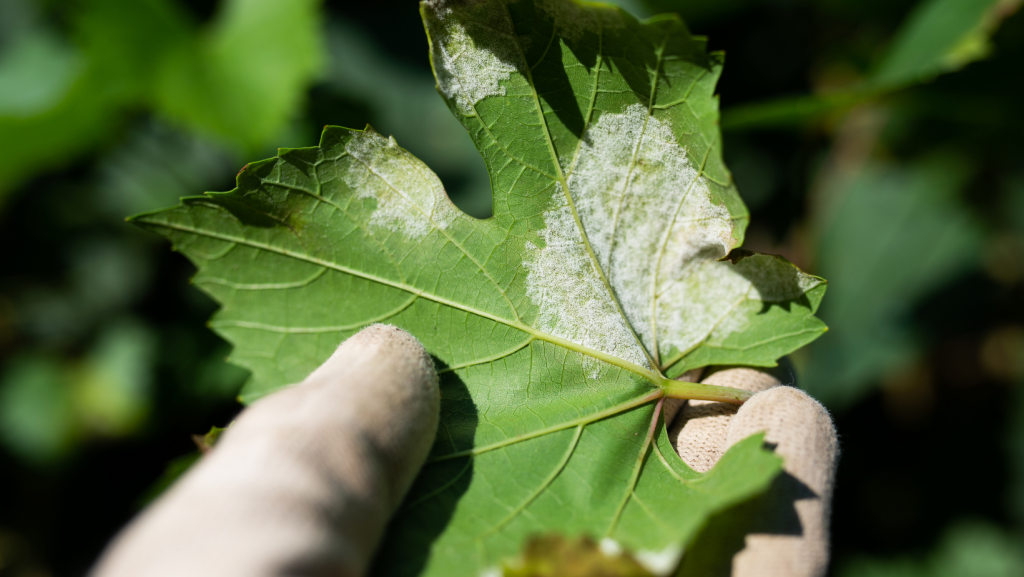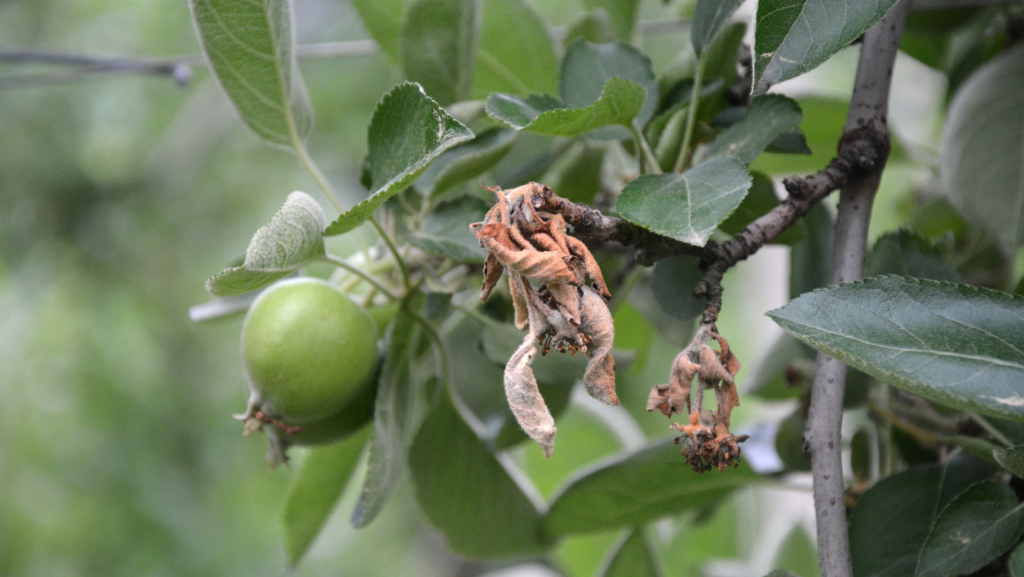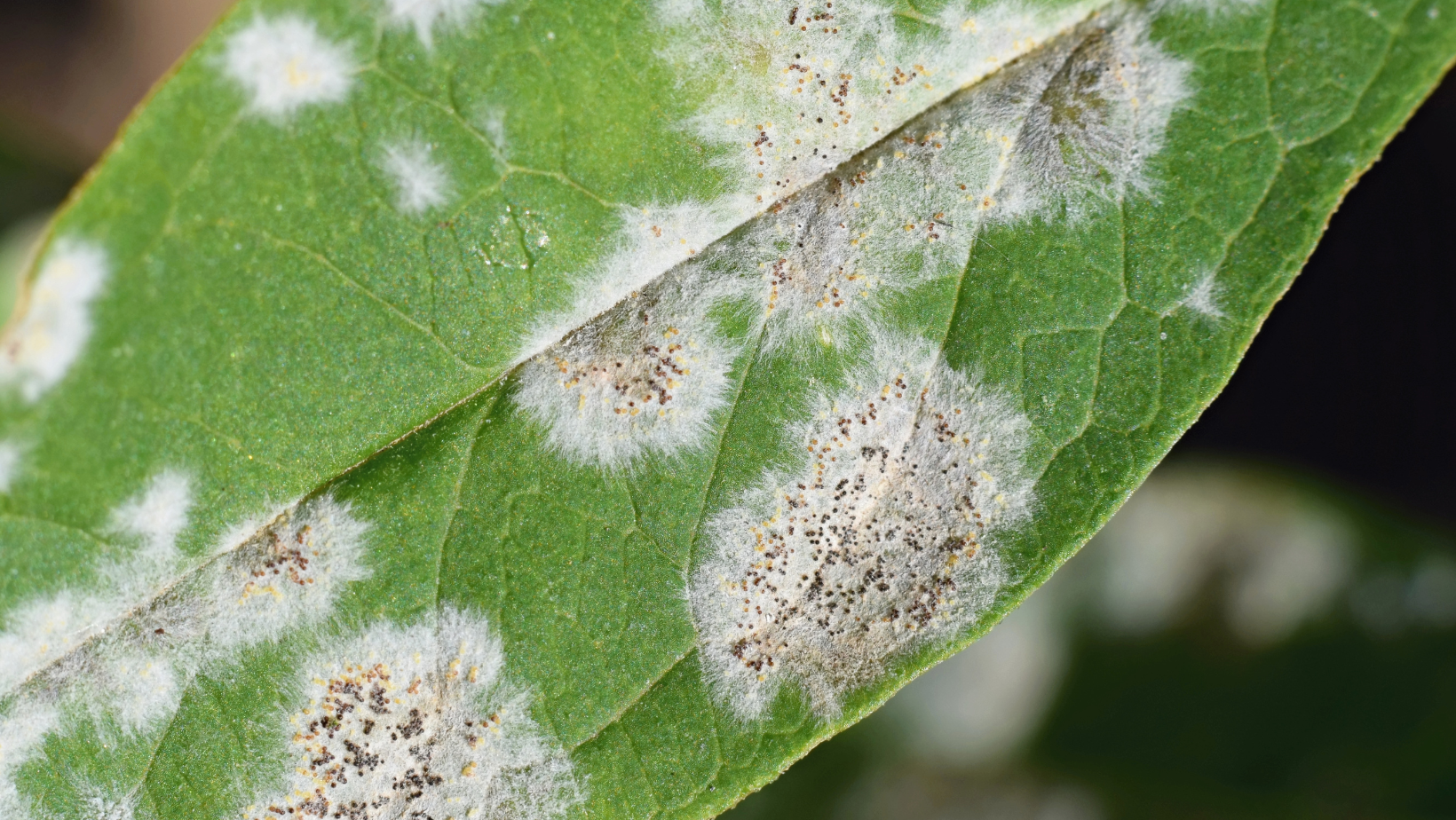Garden diseases can wreak havoc on plants if not addressed quickly. Knowing how to recognize these diseases early and determining whether treatment is possible are key to maintaining healthy plants. Below, we’ll cover some of the most common garden diseases, including powdery mildew, rust, shot hole diseases, downy mildew, verticillium wilt, and fire blight, with recommendations on how to identify and treat them.
1. Powdery Mildew
Recognition
Powdery mildew is characterized by a white or gray powdery coating on leaves, stems, and buds. It often appears in warm, dry climates but thrives in high humidity and poor air circulation. Affected leaves may curl, yellow, and drop prematurely.
Is Treatment Possible?
Yes, powdery mildew can be treated if caught early.
Treatment Options
- Remove infected leaves and buds.
- Apply fungicides such as sulfur-based solutions or neem oil.
- Increase air circulation around plants by pruning and proper spacing.
2. Rust
Recognition
Rust appears as orange, yellow, or brown pustules on the undersides of leaves, while the tops may display yellow spots. Over time, leaves may become distorted or drop prematurely. Rust typically thrives in warm, moist environments.
Is Treatment Possible?
Yes, with prompt action, rust can be managed.
Treatment Options
- Remove Infected Leaves: Prune away and dispose of infected plant parts to reduce the spread of spores.
- Fungicidal Sprays: Use sulfur-based fungicides, neem oil, or a baking soda solution mixed with horticultural oil.
- Improve Air Circulation: Space plants properly and prune to increase airflow, reducing humidity around plants.
3. Shot Hole Diseases
Recognition
Shot hole diseases, often caused by bacterial or fungal pathogens, result in small, circular holes in leaves that resemble pellet holes. The holes are often surrounded by yellow halos. Over time, the entire leaf may turn yellow and fall off.
Is Treatment Possible?
Treatment is possible, but prevention is key.
Treatment Options
- Remove Infected Plant Parts: Remove and dispose of infected leaves, twigs, or fruit to reduce the spread of the disease.
- Fungicides: Apply copper-based fungicides for fungal shot hole diseases. If the disease is bacterial, fixed copper fungicides may also be effective.
- Reduce Overhead Irrigation: Water at the base of plants to avoid wetting the leaves, which encourages disease spread.

4. Downy Mildew
Recognition
Downy mildew causes pale green or yellow patches on the tops of leaves, while the undersides develop gray, fuzzy spores. It often affects plants in cool, moist conditions and can spread rapidly if not treated.
Is Treatment Possible?
Yes, downy mildew can be treated with timely intervention.
Treatment Options
- Remove Infected Leaves: Cut away and dispose of infected leaves to reduce spore spread.
- Fungicides: Use fungicides containing mancozeb or copper-based products. Preventive sprays of neem oil can also be effective.
- Improve Air Circulation: Increase airflow by spacing plants appropriately and pruning excess growth.
5. Verticillium Wilt
Recognition
Verticillium wilt is a soil-borne fungal disease that causes wilting, yellowing, and browning of leaves, often affecting one side of the plant first. Affected plants may have discolored vascular tissue when cut open. This disease primarily affects trees, shrubs, and some vegetables.
Is Treatment Possible?
Unfortunately, there is no cure for verticillium wilt, but managing it is possible.
Treatment Options
- Remove Affected Plants: Remove and destroy severely infected plants, as there is no effective fungicide for verticillium wilt.
- Solarization: Soil solarization can reduce verticillium levels in the soil. Cover the soil with clear plastic to trap heat and kill pathogens.
- Resistant Varieties: Plant resistant varieties of crops in verticillium-affected areas and rotate crops regularly.

6. Fire Blight
Recognition
Fire blight is a bacterial disease that causes blackened, shriveled blossoms and leaves, giving them a “burnt” appearance. It typically affects fruit trees like apples and pears. Infected branches may curl at the tips in a “shepherd’s crook” shape.
Is Treatment Possible?
Yes, fire blight can be treated if caught early, but prevention is critical.
Treatment Options
- Prune Infected Branches: Remove infected branches by cutting them 8–12 inches below the visible damage. Sterilize pruning tools between cuts with a bleach solution.
- Copper Sprays: Apply copper-based bactericides during the dormant season to help prevent the spread of the disease.
- Resistant Varieties: Plant fire blight-resistant varieties of fruit trees, particularly if you’ve had issues with the disease in the past.
Conclusion
Being proactive about garden disease management is essential for maintaining a healthy garden. Early identification and prompt treatment can prevent the spread of common diseases such as powdery mildew, rust, shot hole disease, downy mildew, verticillium wilt, and fire blight. In many cases, proper cultural practices, combined with the right fungicides or bactericides, can help control or prevent these diseases from devastating your garden.




